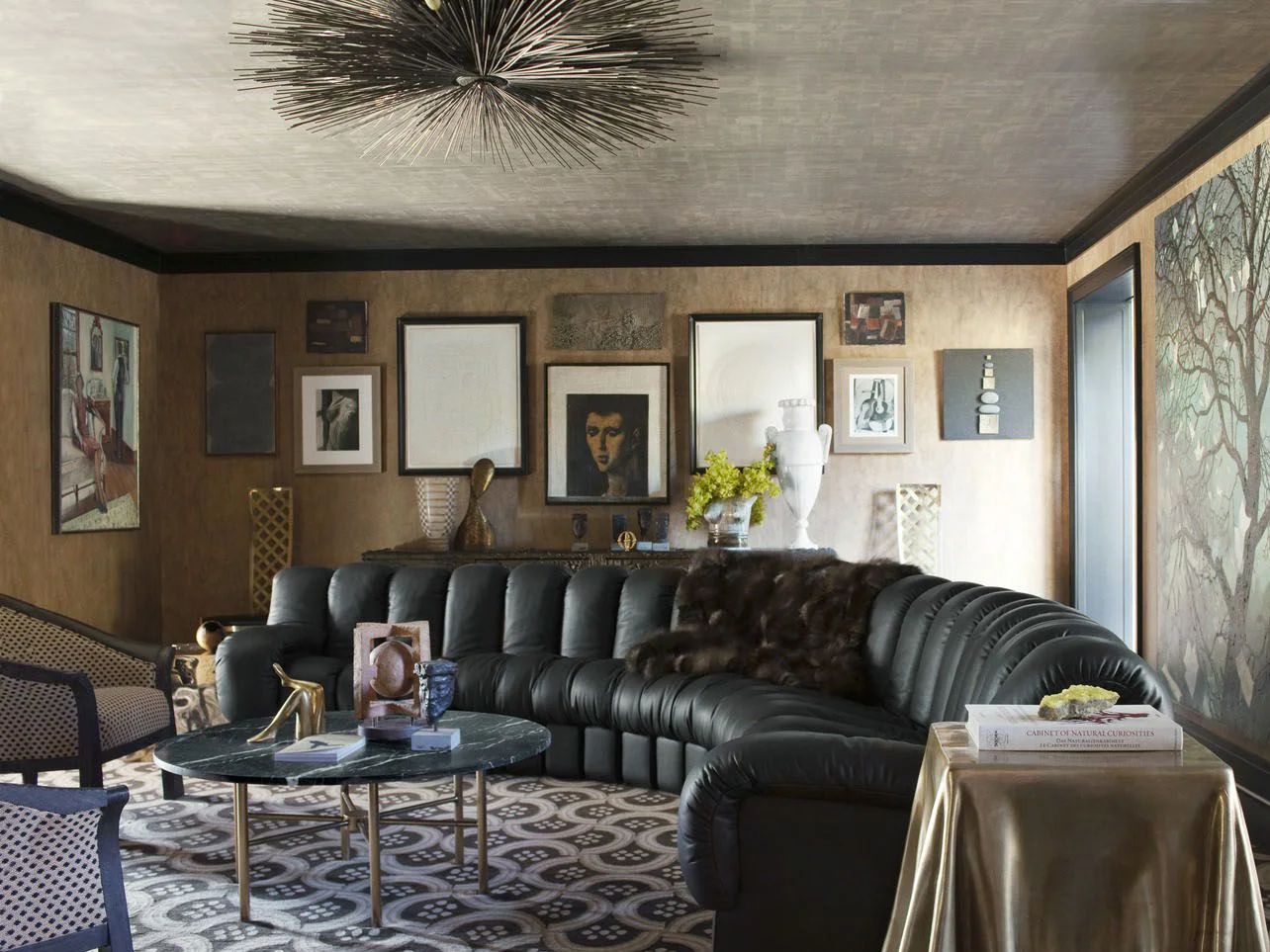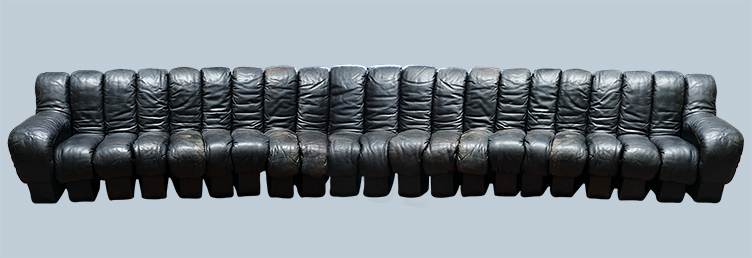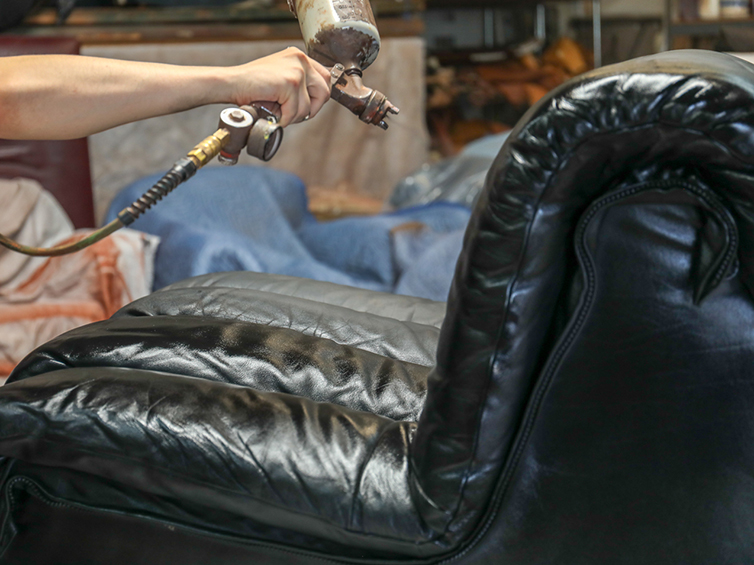Leather Guide: Reconditioning & Refinishing An Icon
A soft, vintage and patinaed leather sofa - especially one that has been oiled and cared for over the years - is often a piece to display with pride. A sofa with cracked and dry leather that hasn't been given enough TLC (and perhaps has a few small tears)? Not as much. That said, not all hope is lost in the hands of an expert leather refinisher, who can apply specific leather reconditioning and refinishing techniques to repair - or completely transform - a beloved piece of leather furniture. Whether your leather piece is scratched from many years of use, or if you're ready for a new color for a beloved leather piece, Revitaliste can help recondition leather furniture.
One of the easiest ways to repair your leather piece is to have an artisan remove scratches. Whether from many years of kids and pets lounging and playing on the piece, leather - especially if not protected - can very easily scratch. Additionally, if a piece has an outdated color, it's possible to refinish leather furniture with a different color dye or tint! Not feeling that white sofa purchased in the 80s, but still love how soft and comfortable it is? Refinish your leather sofa with a more up-to-date color.
The Non-Stop De Sede sofa before leather reconditioning.
In the Revitaliste leather repair workshop, we repaired the leather De Sede Non Stop Sofa - one of our all-time favorite pieces! Dry, cracked, scratched and its black dye faded, this rare piece was in desperate need of leather reconditioning. For this piece, our artisans used a series of treatments to recondition and protect the leather.
Common Leather Types for Furniture
There are several different types of leather, and each type is treated differently in the leather refinishing process. For furniture usage in particular, its important that the type of leather chosen is durable. The most common types of leather used for furniture are 'grain' and 'bonded.' The type of leather used to create the De Sede sofa was full grain, as evidenced by the grain patterns and thickness of the leather.
Leather sofa being gently sanding to prepare for refinishing.
Cleaning the leather to prepare for reconditioning.
Full grain leather
Full grain leather is the most durable type of leather, with several layers of the cowhide. Although quite thick, full grain leather is still breathable, and allows for some absorption of moisture over time (this is the type most likely to patina). Full grain leather often looks the most natural, so variations in color and natural grain patterns are likely to be visible.
top grain leather
Top grain leather is the thinner, topmost, and softest section of the cowhide. Thinner than full-grain, top grain leather is still durable and more flexible.
Bonded leather
Bonded leather is created when leather scraps are blended with an adhesive and pressed together into one layer. Bonded leather isn't as durable as other types, but its thinner, flexible nature allows for the creation of unique textures and embossing.
Leather Furniture Finishes
Depending on the type of leather used on a piece of furniture, there are several different treatments used in the leather refinishing process. The leather surface must be prepped before a finish is applied, as demonstrated on our leather De Sede sofa repair project. Prepping the leather for reconditioning or refinishing can include gentle sanding of rough areas, as well as cleaning with a leather-safe soap. Additionally, a primer may be applied to the leather furniture to help it absorb the stain. On the leather De Sede sofa refinishing, we used an aniline treatment.
Aniline
Aniline, akin to a tint or stain, is a soluble dye that colors full grain leather without producing a uniformly smooth surface. This means that any variations or 'imperfections' in the leather will show through. Additionally, aniline alone does not seal the dye or further protect the leather. Aniline can only be used with full grain leather as it essentially soaks into the layers of the leather.
semi-aniline
Semi-aniline treatment takes aniline process described above one step further by adding a scratch-resistant layer of sealant to the leather surface. While this allows leather furniture to be more durable, it also means that some of those natural grain patterns in a full grain leather may be masked and smoothed away.
A stain being applied to the leather De Sede sofa during reconditioning process
How to Determine the Right Treatment for Your Leather Furniture
Can - and should - all leather furniture be refinished or reconditioned? There are several factors to consider when determining whether your leather furniture is worth restoring. Firstly, furniture made with grain leather will far outlast bonded leather, and when cared for, will develop that well-loved patina look. With the leather De Sede sofa, we knew that the cracked grain leather needed some deep reconditioning after years of drying out. Because grain leather has several layers, that reconditioning will be absorbed.
If a leather piece has a tear or a rip, all hope is not lost. Depending on the depth of the cut, as well as how it has been cared for over the years, it is possible to repair the leather.
Et voila! A section of the leather De Sede sofa reconditioned and ready to go.
Interested in restoring your favorite leather furniture with Revitaliste? Request a leather refinishing quote HERE to get started with your project.








